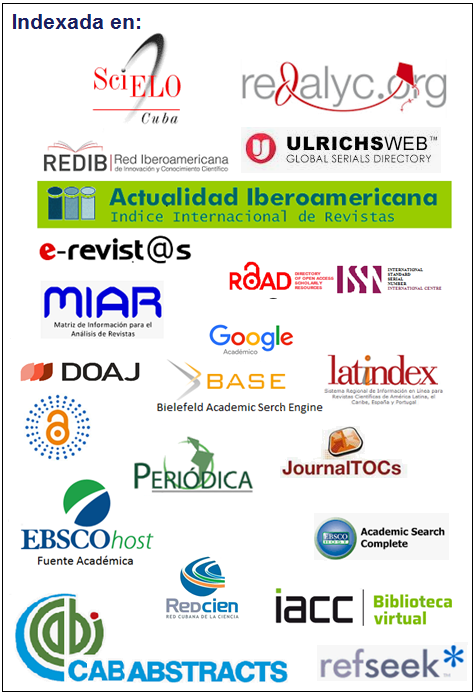Fallas de deslizamiento por el rumbo en la región de Moa
Keywords:
Fallas rumbodeslizantes, geotectónica, tectónicaAbstract
En los estudios tectónicos del Bloque Oriental Cubano y, especialmente, al norte de Cuba oriental, se ha planteado la existencia de movimientos neotectónicos de empuje vertical iniciados en el Mioceno Medio con el levantamiento general del territorio cubano, responsables de la formación de fallas de gravedad que limitan el sistema de horst y grabens que caracteriza la morfología y la tectónica regional. Sin embargo, en investigaciones recientes se han determinado movimientos rumbodeslizantes de gran importancia en la conformación del relieve, que aumentan la complejidad del estilo tectónico. Este artículo demuestra la existencia de estructuras activas de tipo rumbodeslizantes (fallas strike slip) que reflejan la existencia de fuerzas compresivas las cuales empujan el bloque Cuba oriental hacia el norte-noreste, y originan complejos movimientos de los bloques rocosos que lo conformanDownloads
Download data is not yet available.
Published
2001-02-21
How to Cite
Rodríguez-Infante, A., & Blanco-Moreno, J. A. (2001). Fallas de deslizamiento por el rumbo en la región de Moa. Minería & Geología, 18(1), 4. Retrieved from https://revista.ismm.edu.cu/index.php/revistamg/article/view/193
Issue
Section
Articles
Copyright & Licensing
- Authors retain copyright and guaranteeing the right magazine to be the first publication of the work as licensed under a Creative Commons Attribution-NonCommercial that allows others to share the work with an acknowledgment of the work's authorship and initial publication in this journal.
- Authors may establish separate supplemental agreements for the exclusive distribution version of the work published in the journal (eg, place it in an institutional repository or publish it in a book), with an acknowledgment of its initial publication in this journal.
- Authors are allowed and recommended to disseminate their work through the Internet (e.g., in institutional telematic archives or on their websites) before and during the submission process, which can produce interesting exchanges and increase citations of the published work. (See The effect of open access)



